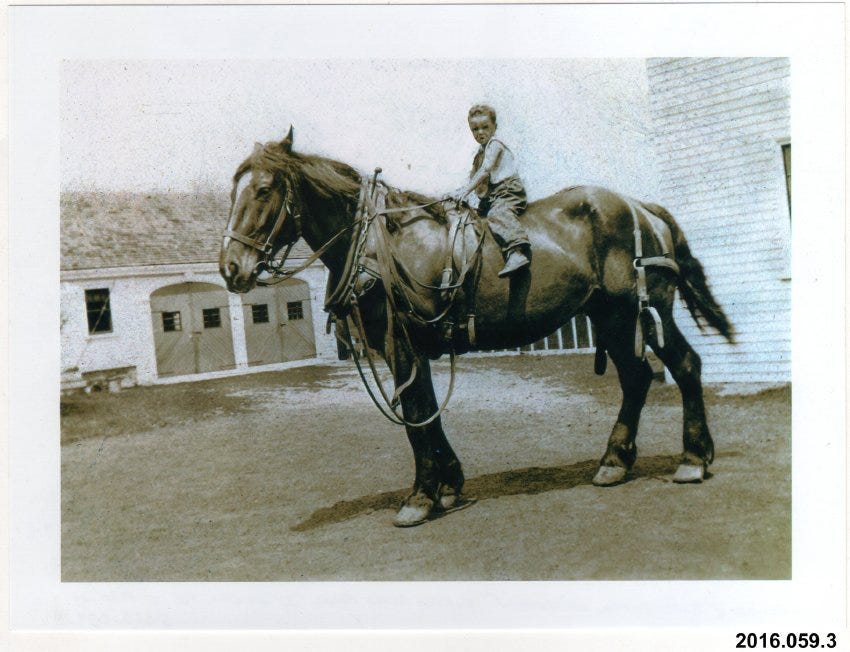Anyone need a paper weight? Warning this might dent your desk!
ACHC #2016.040.1
Some of you might remember hearing about these as a child or even seeing one in use.
It actually had a specific purpose in the horse and buggy days.
Imagine riding around with your horse and wagon making deliveries or riding out in the countryside in a carriage. You want to stop, but there isn't a hitching post in sight. This is what you'd need - A horse anchor!
A horse anchor, also known as a tether weight, horse weight, hitch weight, or harness brake was a common item carried in a buggy. Each horse anchor is unique, as they were usually made in the local foundry or blacksmith. Sometimes anchors were inscribed with the town or farm’s name, the weight, or an advertisement. Most commonly, horse anchors were round, square, or beehive shaped.
Weighing an average of 15-20 lbs, for larger horses or a team an anchor could weigh as much as 40-50 lbs. The trick was to make sure that someone could not only lift the weight to throw it out of the wagon but also could get it back in when it was time to move on!
ACHC #20016.059.3
The horse anchor in our collection was given to us by Board member, James Batchelder. It came from the Batchelder family’s “Rolling Acres” dairy farm on Argilla Road.
It was most likely used to tether Gabriel, Jim’s grandfather Sidney S. Batchelder's large workhorse. About the same size as a Clydesdale, Gabriel or “Gabe” pulled the hay tedder, hay rake, dray, or dump cart, as well as a plow. This 1930 photo of Jim's Uncle Loring “Dup” Batchelder on top of Gabriel, gives a good idea of the size of the horse.
The large, round, 50lb horse anchor once had a belt-like leather strap looped through the middle bar on top. Attached to that was a rope that snapped onto the horse harness to keep the horse from wandering off.
We are fortunate to have the anchor in our collection.
Just prior to demolition on September 21, 1992, of the "Rolling Acres" house and barn, Jim Batchelder was able to gather up a few artifacts that had survived in the barn in the 40 years since the farm was sold. This horse anchor was tucked under a counter in the passageway to the milk house on the south side of the barn.
Do you know more about horse anchors or remember when they were used?






